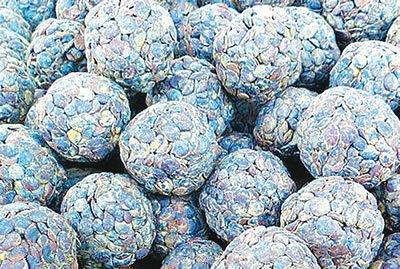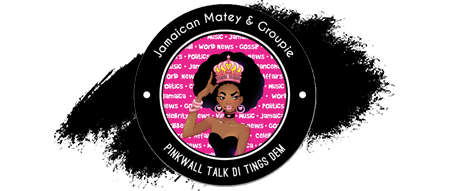FOR most people, locust bean, locally called iru by the Yorubas, dawadawa and ogiri by the Hausas and Igbos respectively may be an unappealing food condiment because of its offensive odour, but according to experts, its health and nutritional gains, far outweighs its stench.
African locust beans are a product of a tree which is botanically called Parkia biglobosa. Parkia biglobosa, a dicotyledonous angiosperm belongs to the family fabaceae and is categorised under spermatophytes, vascular plants. The pods of the tree, commonly referred to as locust beans, are pink in the beginning and turn dark brown when fully mature. Each pod can contain up to 30 seeds.

While interacting with a national daily, Tunde Ajobo, Chief Dietician, Department of Dietetics, University College Hospital (UCH), Ibadan, recommended the consumption of locust beans because of its nutritional and medicinal benefits. Ajobo, had stressed that locust bean has numerous uses and should be a part of people’s everyday diet. “It contains Vitamin A which helps to promote good eye sight.”
According to him, “Locust bean is a natural condiment that is supposed to be in our food on a daily basis because of its numerous nutritional content. It is better than processed seasonings and we should not substitute these natural flavours for the processed condiment that are readily available today.
“Locust bean contains nutrients in a natural form that the body can easily utilise and its health benefits cannot be over-emphasised,” he said.
The dietician explained that locust beans is rich in nutrients that help to promote good sight, aid digestion and reduce risks of hypertension and diabetes.
“It is one of the sources of protein, Vitamin A, sodium, iron, zinc, calcium and potassium. Calcium helps in the formation of strong bones, proper development of teeth as well promoting blood clotting. Zinc helps in healing. Locust beans also helps in absorption and aid digestion of food,” the dietician said.
From local research, the African locust bean seeds contain 35 per cent protein, 16 per cent carbohydrate and 29 per cent lipid while the bark contains between 12 and 14 per cent tannin. The pod contains 60 per cent carbohydrate whereby 10 to 20 per cent of this carbohydrate is sucrose, with a 29 milligrammes of vitamin C per 100 gramme of the pod. The husk is made up of 27 to 44 per cent tannin. The ripe sweet yellow pulp of the locust beans contains 60 per cent simple sugar (except maltose), higher sucrose and cellulose, but less ascorbic acid. Parkia biglobosa is also an excellent source of essential vitamins and minerals such as calcium, fat, potassium, ascorbic acid and phosphorus.
According to researchers, Parkia biglobosa has very high anti-oxidant properties. It has strong free radical scavenging and reducing abilities and as such can be used as an antioxidant for detoxifying the body. The fruit has a remarkable amount of polyphenols that accounts greatly for its anti-oxidising properties. The anti-oxidising properties of the fruit extracts of locust beans are very similar to that of ascorbic acid.
Other local and international researches have highlighted the medicinal properties of other parts of the African locust bean plant showing a wide array of its usefulness. It has been observed to possess wound healing properties. Researchers say that the bark of the African locust beans can be crushed, ground, soaked and boiled for preparing herbal tea for treating and healing wounds. Also, the fruits, like Ajobo said, are normally used in folk medicine for treating hypertension.
It also has immune system boosting properties. Researches revealed that the African locust beans are useful for boosting the immune system, especially in immunocompromised individuals.
Also, the roots of the locust bean are used in folk medicine for preparing lotion for sore eyes. Studies reveal that it helps to promote good eyesight.
According to scientists, the bark can be infused, soaked and boiled in water for use as a mouthwash and for treating toothache.
The root, bark, pod and leaves of the African locust beans can be infused, soaked and used for bathing by individuals suffering from skin infections such as leprosy and sores. It can also be applied to the skin to soothe burns.
It can be macerated (infused or soaked in liquid) for treating respiratory infections such as pneumonia, bronchitis, cold, cough and fever.
African locust bean is a rich source of tannins and as such both the seeds, roots, stems, barks, fruits, flowers and leaves can be used for treating gastrointestinal diseases such as diarrhoea and ulcer.
The leaves contain procyanidin, which has been proven effective in reducing blood pressure. They significantly reduce the diastolic blood pressure more than the systolic blood pressure.
Researchers reveal that Parkia biglobosa is very effective for treating malaria. Both the leaves, pods, stems and barks can be macerated and used as an herbal remedy for tackling malaria.
African locust bean plant contains antibacterial properties that are similar to those of streptomycin and as such can be used for preventing and treating bacterial infections

I am interested in getting d dark brown colour locust bean which is the mature one.